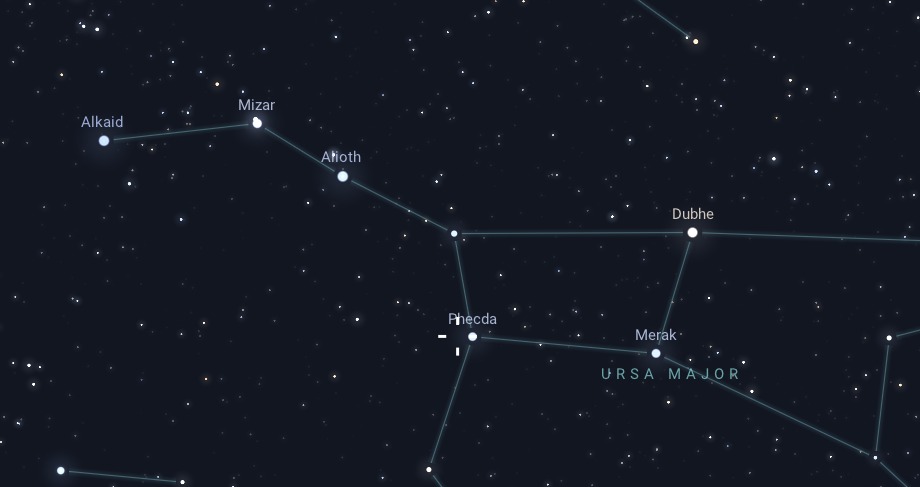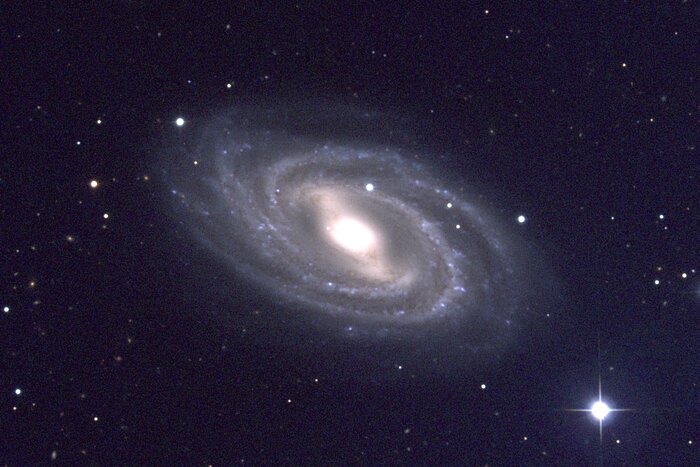Messier 109 (M109), also known as NGC 3992, is a barred spiral galaxy located in the constellation Ursa Major. It was discovered by French astronomer Pierre Méchain in 1781 and later included in Charles Messier’s famous catalog of deep-sky objects. M109 is one of the most prominent and well-studied barred spiral galaxies, offering valuable insights into the structure and dynamics of such galaxies.
Physical Characteristics
M109 is classified as an SBc barred spiral galaxy, which means it has a prominent central bar structure from which its spiral arms extend. The galaxy spans about 120,000 light-years in diameter, making it slightly larger than the Milky Way. Its bright core and well-defined bar are key features that distinguish it from other spiral galaxies. The spiral arms of M109 are tightly wound, contributing to its classification as an SBc galaxy.
The galaxy hosts a rich population of stars, ranging from young, hot blue stars in its spiral arms to older, cooler stars in its central regions. The galaxy is a site of active star formation, particularly in the regions where the spiral arms meet the bar. These areas often contain bright HII regions, which are clouds of ionized hydrogen gas illuminated by the ultraviolet light from young, massive stars. The presence of these regions indicates ongoing star formation, contributing to the galaxy’s overall luminosity and dynamic appearance.
Interactions and Environment
M109 is the brightest member of the M109 Group, a collection of over 80 galaxies. Gravitational interactions within this group can influence the structure and evolution of its member galaxies. For M109, these interactions may play a role in maintaining its barred structure and triggering star formation in its spiral arms. Studying the galaxy within the context of its group provides insights into the dynamics of galaxy clusters and the processes that govern galaxy evolution.
M109’s well-defined bar and active star-forming regions make it a valuable subject for understanding the role of bars in galactic dynamics and evolution. Observations of the galaxy across different wavelengths, from radio to X-ray, help astronomers piece together a comprehensive picture of its structure, star formation activity, and interaction with its environment.
Distance and Location
M109 is located approximately 83.5 million light-years away from Earth. It resides in the constellation Ursa Major, near the star Phecda, one of the stars forming the Big Dipper’s bowl. With an apparent magnitude of about 9.8, it is visible through medium-sized telescopes under good observing conditions. Its position in Ursa Major makes it relatively easy to locate for observers in the Northern Hemisphere.

Observation
When observed through a telescope, M109 presents a striking appearance due to its central bar and spiral arms. The galaxy’s elongated bar structure is a prominent feature, with the spiral arms appearing as faint extensions that wrap around it. Its core is bright and compact, contrasting with the more diffuse appearance of the spiral arms. Observers can also spot dark dust lanes within the galaxy, adding to its visual complexity.
M109 is best observed during the spring months, particularly from March to May, when the constellation Ursa Major is high in the night sky. By planning your observation sessions during these months and ensuring dark skies, you can maximize your chances of seeing and appreciating this beautiful spiral galaxy.



